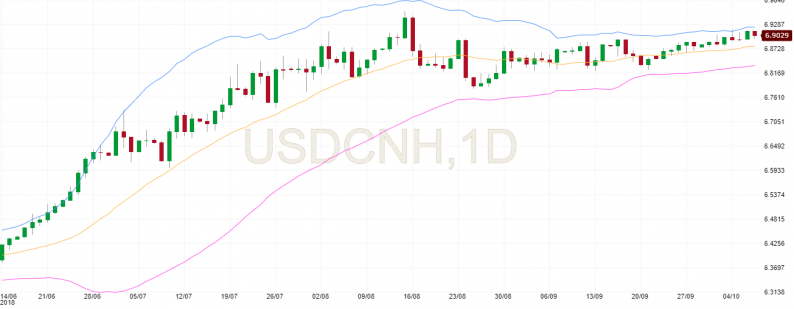Last week, China had a week’s long holiday as the country celebrated its independence. Over the weekend, the People’s Bank of China (PBOC) moved to stimulate the economy by lowering the capital reserve requirements for banks. The new measure will likely free more than $109 billion in capital. This move was also aimed at helping the economy stabilize as the impacts of the trade war become more pronounced.
Today, the Chinese Renminbi fell sharply against the USD even after showed a boost in services PMI. The data showed that the PMI rose to 53.1, which was higher than the August data of 51.5. The most likely reason why the Chinese currency declined is that the US seems to be moving towards more anti-China measures. Just last week, Bloomberg wrote that China had placed tracking chips in products manufactured by Apple and Amazon. In the same week, Mike Pence delivered a speech highly critical of the Chinese. In addition, there is a consensus in Washington about the threat posed by China.
The USD/CNH pair reached a YTD high of 6.95 last month. Since then, the pair has traded within a narrow range even as the currencies of other emerging market countries have fallen. This narrow range has also been confirmed by the narrow Bollinger Bands as shown below. As the Fed continues to tighten, there is a possibility that the pair may continue moving up.














Leave A Comment